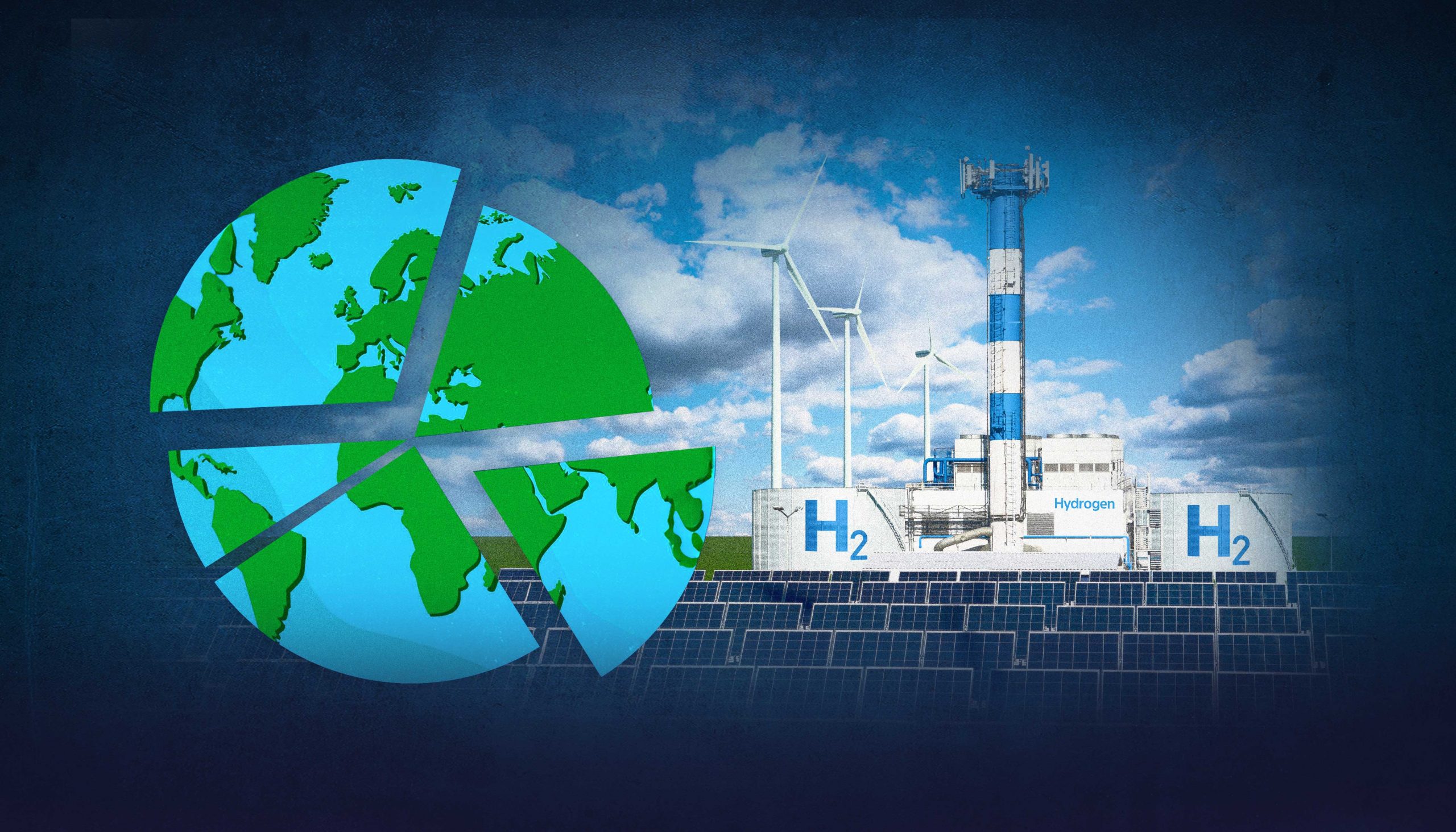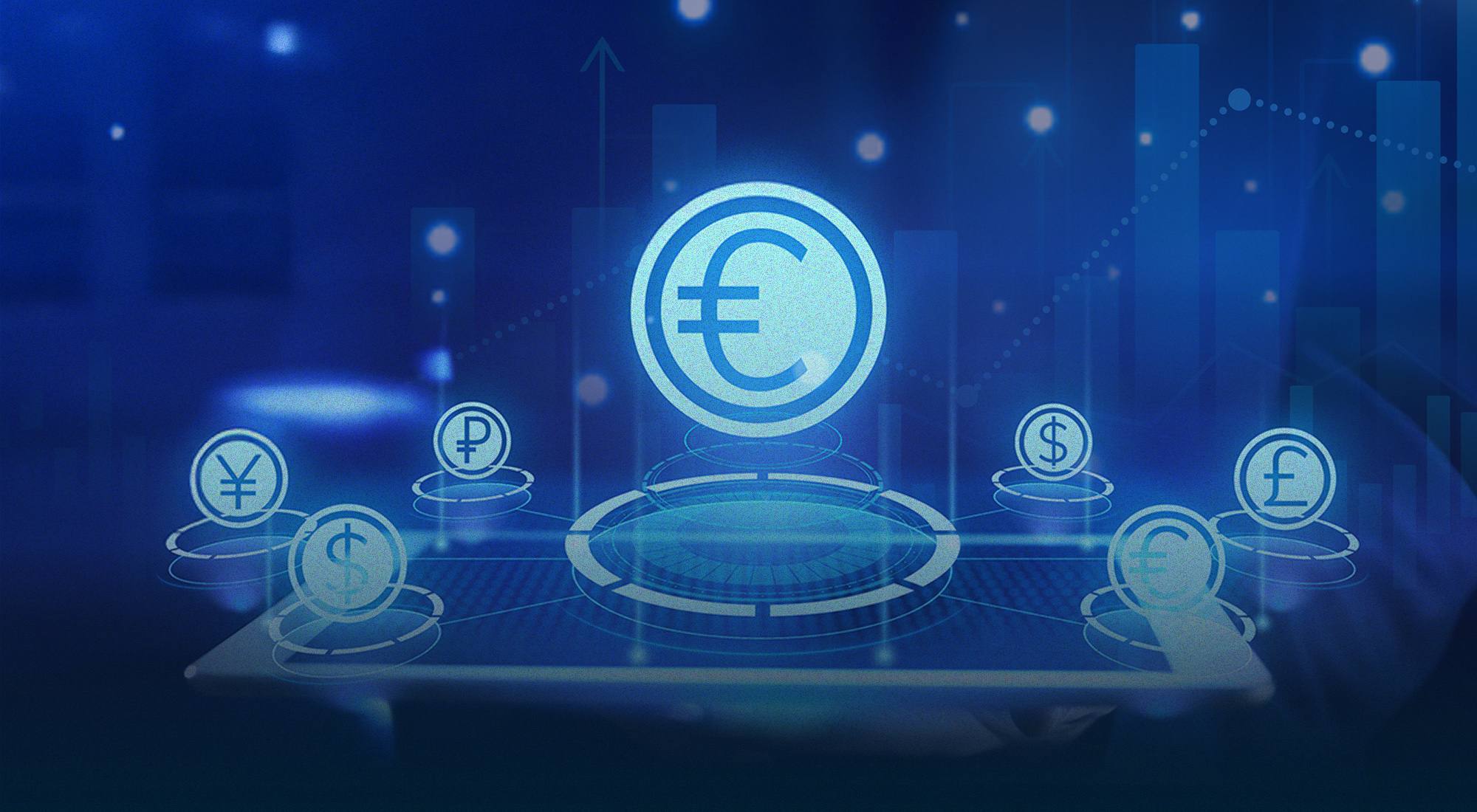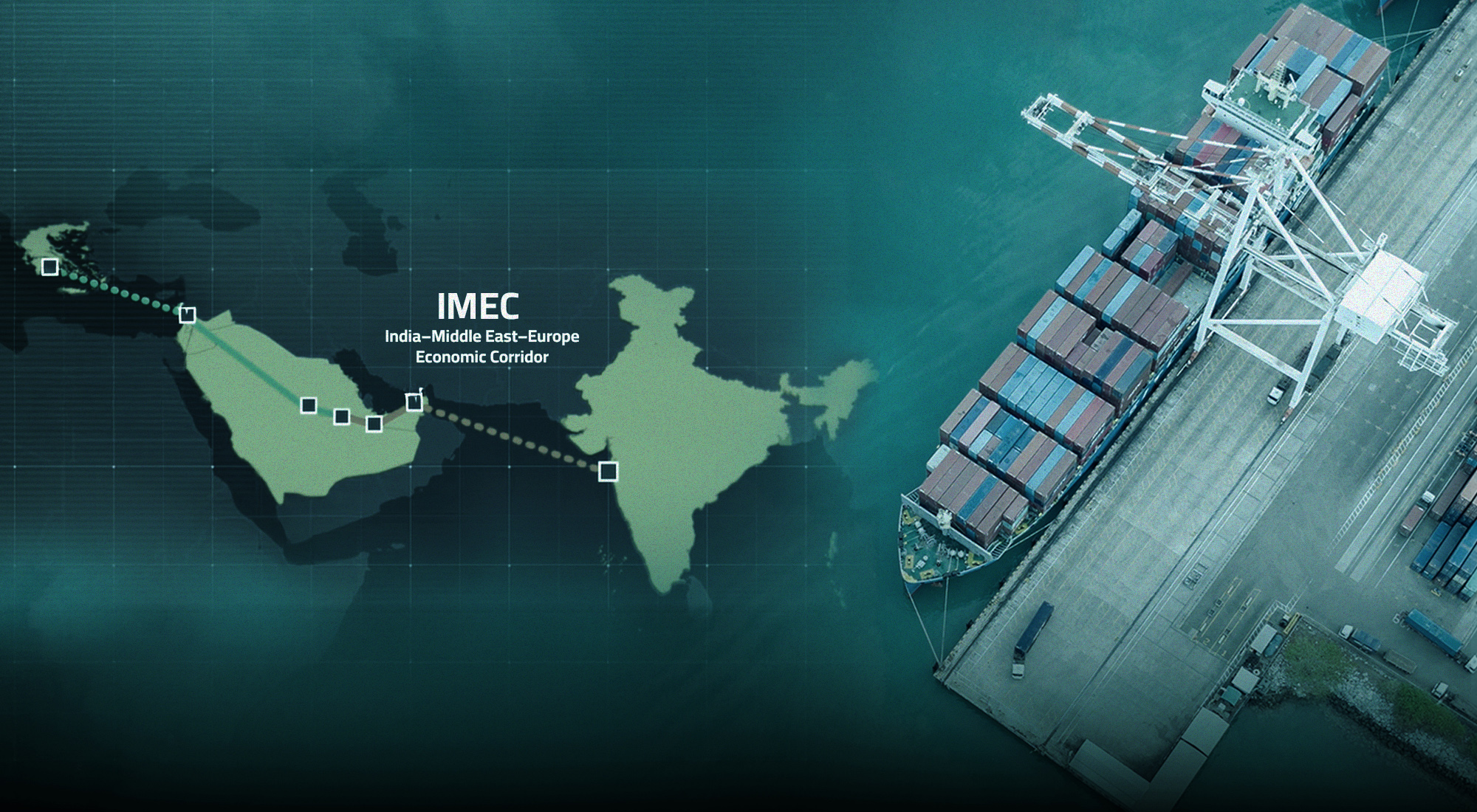The Southern Common Market (Mercosur), established in 1991 through the Treaty of Asunción, emerged as part of the “new regionalism” wave that reshaped global trade and diplomacy in the post-Cold War era. Envisioned as a platform for economic integration and political cooperation among Argentina, Brazil, Paraguay, and Uruguay, the bloc aimed to reduce internal trade barriers, harmonize macroeconomic policies, and foster democratic consolidation across South America (Bouzas et al., 2002; Malamud, 2005). Over time, Mercosur built institutional structures such as the Common Market Council (CMC) and the Mercosur Parliament (Parlasur), developed a customs union, and adopted democratic clauses that differentiate it from purely commercial alliances.
Despite these institutional advances, Mercosur has struggled to maintain momentum. Structural asymmetries, institutional rigidity, and political fragmentation have limited its ability to evolve into a fully functional common market (Genna & Hiroi, 2004). Periodic crises in Argentina and Brazil, combined with divergent national agendas and protectionist reflexes, have exacerbated internal divisions. More recently, the rise of environmental concerns and the fragmentation of global trade governance have exposed the bloc’s limited adaptability in the face of shifting international norms and expectations (Meunier, 2023; Riggirozzi & Tussie, 2012).
The global context in which Mercosur operates has changed drastically. A combination of deglobalization dynamics, rising multipolarity, environmental urgency, and digital transformation is reshaping the architecture of international economic relations. The return of strategic trade competition, evident in the U.S.-China decoupling and the emergence of industrial policy tools in the Global North, poses significant challenges to Global South regionalisms. At the same time, emerging markets are increasingly expected to comply with new standards related to environmental sustainability, labor rights, and digital governance in order to access key export markets (Evenett & Baldwin, 2020; Rodrik, 2018).
Against this backdrop, Mercosur stands at a crossroads. Its members face growing pressure to reform the bloc’s governance model, diversify economic partnerships, and align regional integration with 21st-century priorities such as green growth and digital competitiveness. These dilemmas are not unique to South America: regional projects across Africa, Asia, and the Middle East confront similar tensions between openness, sovereignty, and institutional coherence (Acharya, 2014; Söderbaum, 2016).
This insight seeks to contribute to this broader comparative debate by rethinking Mercosur’s role in a rapidly fragmenting world economy. It examines the bloc’s current challenges and strategic responses through the lenses of geo-economic fragmentation, environmental legitimacy, and institutional flexibility. Drawing on the latest literature on regionalism, trade politics, and emerging market development, it also reflects on the implications for regional integration efforts elsewhere in the Global South. The final section distills actionable insights for policy communities in emerging markets seeking to navigate the complex interplay between economic diversification, geopolitical alignment, and environmental diplomacy.
1.Mercosur at a Crossroads: Achievements and Structural Limitations
1.1 Institutional Architecture and Political Integration
Mercosur was conceived as both a political and economic project. In the wake of military dictatorships and neoliberal reforms during the 1980s and early 1990s, South American states sought to consolidate democratic governance, stabilize macroeconomic policy, and enhance their position in a global economy increasingly governed by regional trade agreements and multilateral rules (Bouzas et al., 2002). The bloc’s institutional framework, comprising the Common Market Council (CMC), the Common Market Group (CMG), the Mercosur Trade Commission (CCM), and the Mercosur Parliament (Parlasur), was intended to facilitate economic policy coordination, dispute resolution, and incremental political convergence.
However, Mercosur’s institutional architecture remains deeply intergovernmental and relatively weak in supranational capacities. Unlike the European Union, which delegated decision-making powers to independent institutions such as the European Commission or the European Court of Justice, Mercosur has relied heavily on presidential summits and ad hoc diplomacy (Malamud, 2005; Briceño-Ruiz, 2010). This “presidential diplomacy” approach makes regional cooperation highly susceptible to domestic political cycles, especially in larger member states like Brazil and Argentina (Genna & Hiroi, 2004; Gardini, 2010). The alternation between integrationist and protectionist stances in Brasília and Buenos Aires, exemplified by shifts from Cardoso to Lula to Bolsonaro, or Menem to Kirchner to Fernández, has hindered long-term policy consistency.
The political nature of Mercosur’s decision-making mechanisms, coupled with the principle of consensus, often results in paralysis. Disputes over trade rules, environmental regulation, or third-party agreements are typically resolved through protracted negotiations rather than binding arbitration. Compared to newer regional initiatives in Africa or Asia that blend intergovernmental pragmatism with strategic coordination (e.g., the African Continental Free Trade Area or ASEAN), Mercosur has struggled to modernize its institutional toolkit for the 21st century (Acharya, 2014; Söderbaum, 2016).
Moreover, the political dimension of integration has become more contested in recent years. While Mercosur once promoted democratic norms, such as through the 1998 Ushuaia Protocol on democratic clauses, its credibility as a normative actor has weakened. The suspension of Venezuela in 2016 and disputes over democratic backsliding in member states have exposed the limits of regional consensus and enforcement power (Riggirozzi & Tussie, 2012; Burges, 2015).
1.2 Economic Asymmetries and Integration Fatigue
Economic asymmetry remains one of Mercosur’s most enduring and destabilizing characteristics. Brazil alone represents approximately 70% of the bloc’s GDP, making it the gravitational center of both trade and investment flows. This structural imbalance has generated persistent frictions with smaller economies such as Uruguay and Paraguay, which often find themselves disadvantaged in negotiations and sidelined in regional value chains (Aduana News, 2025). Uruguay, in particular, has voiced discontent with Mercosur’s restrictive trade posture, advocating for greater flexibility to negotiate bilateral agreements beyond the bloc’s Common External Tariff (CET).
Such demands reflect growing “integration fatigue” within Mercosur. Despite three decades of formal cooperation, many barriers to effective economic integration persist. Tariff and non-tariff barriers continue to disrupt intra-regional trade, and progress toward customs union harmonization has been erratic at best. Regulatory divergence, logistical bottlenecks, and poor infrastructure coordination have all limited the emergence of a seamless internal market (Devlin & Estevadeordal, 2001). Labor mobility remains underdeveloped, and the services sector, which is a key to modern competitiveness, remains only partially liberalized.
These limitations are further exacerbated by recurring macroeconomic instability in member states. Argentina’s chronic inflation, capital flight, and debt crises, along with Brazil’s recessions and political volatility, undermine regional confidence and investor interest (Ocampo, 2017). As a result, Mercosur has been less successful than other regional blocs in catalyzing trade-led development or attracting diversified foreign direct investment. In contrast, regional strategies in East and Southeast Asia, while equally heterogeneous, have leveraged export-oriented growth models and supply-chain integration more effectively (Baldwin, 2011).
For Mercosur, the interplay between economic asymmetry, institutional inertia, and political volatility poses a systemic challenge. Without meaningful reform, the bloc risks becoming increasingly irrelevant in a global economy defined by green industrial policy, digital transformation, and fragmented trade governance.
2. Geo-economic Pressures: Fragmentation, Competition, and Dependence
2.1 Return of Defensive Regionalism and Trade Wars
The global trade environment has entered a phase of intensified geo-economic rivalry, marked by strategic competition between the United States and China, the weaponization of interdependence, and the fragmentation of global value chains (Farrell & Newman, 2019). In this context, regional blocs are re-emerging not merely as trade facilitators, but as defensive platforms for economic sovereignty and resilience. Mercosur, however, appears ill-prepared to navigate this shift.
The U.S.-China trade war and COVID-19-induced supply chain disruptions have underscored the vulnerabilities of commodity-dependent economies. As the global economy moves toward re-shoring and the localization of strategic industries, especially semiconductors, electric vehicles, and renewable technologies, Mercosur remains anchored in a 20th-century export model. Its primary exports, soy, beef, iron ore, and crude oil, are increasingly exposed to price volatility, climate risk, and technological obsolescence (Gallagher & Kozul-Wright, 2022).
Meanwhile, advanced economies are pursuing bold industrial strategies. The U.S. Inflation Reduction Act and the EU’s Green Industrial Plan aim to reindustrialize their economies while promoting decarbonization. These measures are backed by state aid, subsidies, and strict rules of origin, which could further marginalize external suppliers not aligned with their value and production chains (Juhasz et al., 2023). In this emerging techno-industrial paradigm, Mercosur has not articulated a coherent strategy to reposition itself in digital, green, or defense-related value chains, unlike ASEAN or the African Continental Free Trade Area (AfCFTA), which have embraced technology partnerships and flexible investment regimes (Estevadeordal et al., 2011; UNECA, 2023).
Instead, Mercosur’s rigid institutional framework and outdated economic model place it at risk of being bypassed in the new global division of labor, as key trade and investment flows pivot toward blocs with more dynamic regulatory ecosystems and strategic clarity.
2.2 Bilateralism and the China Factor
China’s growing presence in Latin America represents both an opportunity and a challenge for Mercosur. The country has become a dominant economic actor in the region, not only as a top trading partner for Brazil, Argentina, and Uruguay, but also as a major source of infrastructure financing, energy investment, and technology transfer (Ray & Gallagher, 2017). In 2022, China surpassed Brazil as Argentina’s main export destination, and Beijing has expressed explicit interest in deepening bilateral ties with individual Mercosur members, particularly Uruguay.
Uruguay’s push to negotiate a bilateral free trade agreement (FTA) with China, bypassing Mercosur’s collective trade policy, reveals growing dissatisfaction with the bloc’s slow and consensus-based approach. Montevideo’s position reflects a broader trend toward “flexibilization”, the preference for tailored, strategic partnerships over cumbersome multilateral frameworks (Riggirozzi & Tussie, 2012).
This trend raises existential questions about Mercosur’s future. Can the bloc preserve cohesion in an era where states increasingly seek autonomy in navigating bilateral opportunities? Or will it disintegrate under the weight of internal heterogeneity and institutional rigidity? The challenge is exacerbated by Brazil and Argentina’s domestic constraints, which limit their capacity to lead regionally or offer attractive alternatives to Chinese engagement.
This shift toward bilateralism echoes broader debates on “post-hegemonic regionalism” in Latin America. Unlike the early 2000s wave of regionalism, which was rooted in political solidarity, shared norms, and institutional deepening, today’s landscape is characterized by instrumental, issue-specific cooperation shaped by changing power asymmetries and external incentives (Briceño-Ruiz & Morales, 2019).
2.3 The EU-Mercosur Agreement and Environmental Conditionality
The geo-economic tension between openness and normative conditionality is perhaps most visible in the long-delayed EU-Mercosur trade agreement. After two decades of negotiation, the agreement was politically concluded in 2019, but its ratification remains stalled due to concerns over environmental governance, particularly deforestation in the Amazon and weak enforcement of sustainability standards.
European countries such as France, the Netherlands, and Austria have vocally opposed the agreement in its current form, demanding binding commitments on climate action, labor rights, and indigenous protections. These demands were sharpened under the EU’s evolving Green Deal architecture, which increasingly links trade access to verifiable environmental performance (Meunier, 2023; European Commission, 2023).
Brazil’s environmental backsliding under Jair Bolsonaro, marked by record levels of Amazon deforestation and the weakening of environmental agencies, severely damaged the bloc’s credibility. Although the return of Luiz Inácio Lula da Silva has softened diplomatic tensions, tangible regulatory reforms and monitoring mechanisms remain insufficient to meet European expectations (Maisonnave, 2023).
The EU-Mercosur impasse reveals a structural dilemma: Latin American exporters are being pulled into a global trading system where sustainability and human rights standards are not optional, but integral to market access. In this sense, the “green conditionality” attached to trade deals by the EU, and potentially by the U.S. and others, constitutes a new form of geo-economic governance, one that Mercosur has yet to adapt to institutionally or strategically (Horn et al., 2010).
Unless the bloc develops a credible environmental and social governance framework that aligns with emerging global standards, its access to high-value markets could be permanently constrained. This would further entrench its dependence on commodity exports to China, with significant long-term risks for diversification and sustainable development.
3. Future Scenarios and Strategic Options for Mercosur
As the international order transitions toward multipolarity and regionalism reconfigures around resilience, sustainability, and technological autonomy, Mercosur faces a critical juncture. The bloc must choose between inertia and innovation, either remaining a passive actor in a shifting world economy or proactively adapting its architecture, priorities, and external alliances. This section outlines three strategic avenues that could serve as pillars for Mercosur’s reinvention.
3.1 Flexible Geometry and Multi-Speed Integration
Mercosur’s founding model, based on uniform progress and consensus, has become a liability in a context marked by divergent national priorities and asymmetrical capacities. A compelling alternative is “flexible geometry”, which allows for differentiated integration among members. Under this model, subsets of countries could advance integration in domains such as digital trade, clean energy, or labor mobility, while others retain the status quo.
Uruguay’s unilateral efforts to negotiate trade agreements with China exemplify the pressure for flexibility, while Brazil’s economic elites have signaled openness to differentiated cooperation, especially in areas linked to competitiveness and innovation (Aduana News, 2025). However, without clear legal and institutional safeguards, this approach risks deepening internal fragmentation and eroding Mercosur’s collective identity.
The experience of ASEAN offers valuable lessons: it has institutionalized a form of “variable geometry” through a tiered approach to integration, where core agreements are complemented by opt-in protocols for more ambitious initiatives (Estevadeordal et al., 2011). Such flexibility, combined with mechanisms for coordination and dispute resolution, could provide Mercosur with the adaptability needed to thrive amid diversity, so long as the political will for such reform exists.
In theoretical terms, this aligns with the concept of “differentiated regionalism”, where institutional resilience stems not from homogeneity, but from modular governance structures capable of responding to evolving challenges and opportunities (Lenz & Burilkov, 2017).
3.2 Green and Digital Transformation as Anchors of Renewal
To regain relevance and foster sustainable development, Mercosur must transcend its traditional reliance on commodity exports and embrace a new integration agenda centered on green transition and digital innovation. These twin transformations offer not only economic opportunities but also avenues for social cohesion and geopolitical positioning.
The climate crisis is reshaping global trade and investment rules. Cross-border green infrastructure projects, such as renewable energy corridors or regional water management systems, could become central to Mercosur’s cooperative efforts. Coordinated carbon pricing mechanisms, biodiversity protection schemes, and the development of climate-resilient agriculture could bolster both ecological sustainability and economic diversification (Gallagher & Kozul-Wright, 2022).
Simultaneously, digital transformation presents a strategic opportunity to modernize economies and boost regional competitiveness. Developing common standards on data protection, digital taxation, fintech regulation, and e-commerce platforms could strengthen regional supply chains and attract foreign direct investment in high-tech sectors. Moreover, a shared digital strategy could address disparities in connectivity and digital literacy, especially in rural areas (Gallagher & Kozul-Wright, 2022).
Brazil and Argentina, both signatories to the Paris Agreement and home to significant scientific and technological capabilities, could lead this dual transformation, embedding regional initiatives within the broader framework of the UN Sustainable Development Goals (SDGs) and the Latin American and Caribbean Climate Action Agenda.
By aligning trade and industrial policies with sustainability and innovation imperatives, Mercosur could reposition itself as a hub of green and digital diplomacy, rather than a passive commodity supplier in an increasingly normative global economy (Meunier, 2023; Juhasz et al., 2023).
3.3 Strategic Alliances Beyond the Atlantic
In a multipolar and fragmented global landscape, Mercosur must urgently diversify its geopolitical partnerships. While ties with the EU and the U.S. remain important, overreliance on these actors, especially in the face of slow-moving trade negotiations and rising conditionalities, could expose the bloc to strategic vulnerability.
Deepening South-South cooperation offers a promising alternative. Engaging with the African Continental Free Trade Area (AfCFTA), BRICS+, and emerging Middle Eastern and Southeast Asian economies could open new trade corridors and investment streams, particularly in critical minerals, renewable technologies, and food systems (Briceño-Ruiz & Morales, 2019; UNECA, 2023).
These partnerships should not be merely transactional, but embedded in broader cooperation frameworks involving research, infrastructure co-financing, and knowledge transfer. South-South mechanisms, such as the G77, the Non-Aligned Movement, or the IBSA Dialogue Forum, offer platforms to build inclusive coalitions that challenge traditional hierarchies in global governance (Riggirozzi & Tussie, 2012).
Strategic diversification also implies engaging more actively in global digital and climate governance forums, such as the G20, COP summits, or the WTO Joint Initiative on E-commerce, to shape the rules of the game rather than merely adapt to them.
In short, Mercosur’s strategic autonomy in the 21st century will depend not only on internal reforms but also on its ability to forge multi-directional alliances that reflect its developmental aspirations and geopolitical realities.
4. Discussion and Strategic Lessons for Emerging Markets
Mercosur’s trajectory, marked by early ambition, institutional rigidity, and recent fragmentation, offers critical lessons for regional integration initiatives across the Global South. In a world increasingly shaped by systemic shocks, geopolitical rivalries, and normative reconfigurations, emerging markets in Sub-Saharan Africa, Southeast Asia, the Middle East, and beyond must extract insights from Mercosur’s experience to avoid similar pitfalls. This section distills five strategic imperatives for future-oriented, resilient regionalism.
4.1 Embrace Adaptive and Modular Regionalism
Mercosur’s rigid, consensus-based framework has struggled to accommodate divergent national interests and respond to exogenous shocks such as trade wars and the COVID-19 pandemic. In contrast, emerging regional blocs should explore modular integration architectures that allow states to participate at different speeds and depths.
This approach, commonly referred to as variable geometry, has been operationalized with relative success in ASEAN and the African Union, where opt-in protocols and differentiated commitments have helped balance ambition with political and economic realities (Hartzenberg, 2011; Lenz & Burilkov, 2017). Such models prioritize resilience and flexibility, enabling regional institutions to adapt incrementally rather than collapse under the weight of uniformity.
Theoretical frameworks such as neo-functionalism and institutional bricolage also support this logic, highlighting how regional organizations evolve through crises by layering new governance mechanisms onto existing structures (Börzel & Risse, 2016).
4.2 Leverage Environmental Diplomacy and Norm Alignment
Mercosur’s stalled trade agreement with the European Union vividly illustrates the rising role of environmental and social norms in global economic diplomacy. Trade is no longer governed solely by tariffs and quotas but by adherence to environmental, social, and governance (ESG) standards, particularly around deforestation, labor rights, and emissions.
For other emerging regions, particularly those rich in natural resources, this signals a need to mainstream environmental diplomacy into regional planning. Integrating climate resilience, biodiversity protection, and social safeguards into trade and investment strategies is no longer optional—it is essential for accessing green finance, avoiding carbon border adjustment mechanisms, and securing preferential trade deals (Gallagher & Kozul-Wright, 2022; Meunier, 2023).
Africa’s AfCFTA and the Arab Strategy for Sustainable Development are beginning to incorporate such principles, but institutional implementation and data transparency remain challenges (UNECA, 2023).
4.3 Build Resilient and Diversified Value Chains
Mercosur’s economic model, anchored in raw material exports, has left its members vulnerable to commodity price swings and external shocks. The reconfiguration of global value chains due to geopolitical decoupling and pandemic disruptions presents an opportunity for emerging markets to redefine industrial policy.
Rather than pursuing outright decoupling from the global economy, the strategic goal should be re-coupling on new terms. This involves investing in regional value chains, strengthening infrastructure and logistics corridors, and targeting critical sectors such as agri-tech, digital health, green hydrogen, and generic pharmaceuticals (Andreoni & Chang, 2019; Juhasz et al., 2023).
Institutions such as development banks, regional industrial development funds, and innovation clusters will be critical to driving this transformation. Importantly, regional trade must be embedded within a broader strategy of economic diversification and inclusive industrialization.
4.4 Invest in Knowledge and Technological Sovereignty
Mercosur’s limited capacity to shape regional innovation ecosystems reflects a broader structural weakness common to many emerging blocs: the underdevelopment of science, technology, and innovation (STI) systems. For future-oriented regionalism, technological sovereignty must become a central pillar.
This implies creating shared research infrastructures, harmonizing data governance regimes, and promoting joint innovation platforms, particularly in high-leverage domains like artificial intelligence, climate tech, and digital finance (OECD, 2024a, 2024b, UNCTAD, 2024). Cross-border STI partnerships, capacity-building programs, and regional tech funds can amplify the region’s collective bargaining power in global standard-setting forums.
Lessons from initiatives such as the African Science, Technology and Innovation Indicators (ASTII) and ASEAN Smart Cities Network show that multi-actor governance, involving universities, regulators, and private innovators, is crucial for scalable impact.
4.5 Diversify Alliances through South-South Diplomacy
Finally, Mercosur’s over-dependence on Euro-Atlantic negotiations—especially with the EU—has constrained its strategic agency. In contrast, more agile emerging economies have pursued diversified diplomatic engagements, leveraging South-South cooperation and cross-regional platforms like BRICS+, IBSA, and the G77 to access alternative capital, infrastructure partnerships, and knowledge flows (Riggirozzi & Tussie, 2012).
This form of diplomacy is not merely reactive but normative, rooted in shared development challenges and post-colonial solidarities. For example, recent triangular cooperation initiatives between Latin America, Africa, and Asia have enabled collaborative action in areas ranging from vaccine production to digital education and public sector modernization (UNOSSC, 2023).
By cultivating horizontal partnerships and emphasizing co-creation over conditionality, emerging markets can reshape the global development architecture in their favor, building alliances based on mutual gain rather than dependency.
Conclusion
Mercosur stands at a pivotal crossroads. While its early ambitions for regional integration yielded important institutional and economic milestones, progress has been uneven and frequently stalled by institutional rigidity, internal asymmetries, and the mounting pressures of an evolving global order. In an era where trade is increasingly shaped by environmental standards, digital innovation, and geopolitical rivalry, Mercosur’s traditional model is rapidly losing traction.
To remain relevant, the bloc must embrace structural reform. Flexible integration mechanisms, a renewed focus on green and digital transformation, and strategic diversification of partnerships, particularly beyond the Euro-Atlantic axis, offer viable avenues for revitalization. Such shifts require political will, institutional agility, and a shared vision for regional resilience.
More broadly, Mercosur serves as both a cautionary tale and a source of strategic insight for emerging markets worldwide. Its experience highlights the risks of over-centralized governance, environmental neglect, and excessive dependence on a narrow set of partners. At the same time, it underscores the transformative potential of adaptive regionalism, ESG alignment, and South-South cooperation.
In an increasingly fragmented and contested global economy, regional blocs that can evolve, rather than resist, will be best positioned to turn integration into a lever for inclusive, sustainable development. The future of Mercosur, and of regionalism more broadly, will depend not on past models, but on the capacity to innovate, diversify, and lead amidst complexity.
References
Acharya, A, (2014), The End of American World Order, Polity Press.
Aduana News (2025), “MERCOSUR at a crossroads: challenges and opportunities in the current global context.”
Andreoni, A., & Chang, H. J., (2019), “The political economy of industrial policy: Structural interdependencies, policy alignment, and conflict management,” Structural Change and Economic Dynamics 48, 136-150.
Baldwin, R., (2011), “21st century regionalism: Filling the gap between 21st century trade and 20th century trade rules,” WTO Staff Working Paper ERSD-2011-08.
Börzel, T. A., & Risse, T., (2016), Three cheers for comparative regionalism. In T. A. Börzel & T. Risse (Eds.), The Oxford Handbook of Comparative Regionalism (pp. 605-622). Oxford University Press.
Bouzas, R., da Motta Veiga, P., & Torrent, R., (2002), In-depth analysis of MERCOSUR integration, Inter-American Development Bank.
Briceño-Ruiz, J., (2010), “From the South American Free Trade Area to the Union of South American Nations: The Transformation of a Rising Regional Process,” Latin American Policy 1, 208-229.
Briceño-Ruiz, J., & Morales, I. (Eds.), (2019), Post-Hegemonic Regionalism in the Americas: Toward a Pacific-Atlantic Divide? Routledge.
Burges, S., (2015), “Revisiting consensual hegemony: Brazilian regional leadership in question,” International Politics 52, no.2, 193-207.
Devlin, R., & Estevadeordal, A., (2001), What’s new in the new regionalism in the Americas? Inter-American Development Bank – Working Paper 6.
European Commission, (2023), Sustainable trade policy and the EU-Mercosur agreement, https://policy.trade.ec.europa.eu.
Evenett, S. J., & Baldwin, R., (2020), Revitalising Multilateralism: Pragmatic Ideas for the New WTO Director-General, CEPR Press.
Farrell, H., & Newman, A., (2019), “Weaponized interdependence: How global economic networks shape state coercion,” International Security 44, no. 1, 42–79.
Gallagher, K. P., & Kozul-Wright, R. (2022), The Case for a New Bretton Woods, Wiley Press.
Gardini, G. L., (2010), The Origins of Mercosur: Democracy and Regionalization in South America, Palgrave Macmillan.
Genna, G. M., & Hiroi, T., (2004), Power Preponderance and Domestic Politics: Explaining Regional Economic Integration in Latin America and the Caribbean, 1960-1997, International Interactions 30, no. 2, 143-164.
Hartzenberg, T., (2011), “Regional integration in Africa,” World Trade Organization Economic Research and Statistics Division Staff Working Paper ERSD-2011-14.
Horn, H., Mavroidis, P. C., & Sapir, A., (2010), “Beyond the WTO? An anatomy of EU and US preferential trade agreements,” The World Economy 33, np. 11, 1565–1588.
Juhasz, R., Lane, N., Mazzucato, M., Rodrik, D., Spence, M., Stiglitz, J. E., Strain, M.R., (2023), “Industrial policy is back,” Project Syndicate.
Lenz, T., & Burilkov, A., (2017), “Institutional pioneers in world politics: Regional institution building and the influence of the European Union,” European Journal of International Relations, 23, no. 3, 654–680.
Maisonnave, F., (2023, September 17), “Brazil restores stricter climate goals,” AP News.
Malamud, A., (2005), “Presidential diplomacy and the institutional underpinnings of Mercosur: An empirical examination,” Latin American Research Review, 40, no. 1, 138–164.
Meunier, S., (2023), “The European Union as a trade power,” In C. Hill, M. Smith, & S. Vanhoonacker (Eds.), International Relations and the European Union (pp. 250–276), Oxford University Press.
Ocampo, J. A., (2017), “Commodity-led development in Latin America,” International Development Policy 9, no. 1, 51-76.
OECD, (2024a), “OECD agenda for transformative science, technology and innovation policies,” https://www.oecd.org/content/dam/oecd/en/publications/reports/2024/04/oecd-agenda-for-transformative-science-technology-and-innovation-policies_5ced463a/ba2aaf7b-en.pdf
OECD, (2024b), “Recommendation of the Council on enhancing access to and sharing of data,” https://one.oecd.org/document/COM/DSTI/CDEP/STP/GOV/PGC%282024%291/FINAL/en/pdf.
Ray, R. and Gallagher, P., (2017), “China-Latin America Economic Bulletin, 2017 Edition. Global Economic Gouvernance Initiative,” Discussion Paper 2017-1.
Riggirozzi, P., & Tussie, D., (2012), The Rise of Post-Hegemonic Regionalism in Latin America, Springer.
Rodrik, D., (2018), Straight Talk on Trade: Ideas for a Sane World Economy, Princeton University Press.
Söderbaum, F., (2016), Rethinking Regionalism, Palgrave Macmillan.
Estevadeordal A., L. K. G. Suominen, & R. The, (2011), Regional Rules in the Global Trading System, Cambridge University Press.
UNCTAD, (2024), “Science, technology and innovation policy review: Global cooperation for sustainable development,” https://unctad.org/system/files/official-document/ecn162024d3_en.pdf.
UNECA, (2023), United Nations Economic Commission for Africa, https://www.uneca.org
UNOSSC, (2023), United Nations Office for South-South Cooperation, https://www.unsouthsouth.org.








